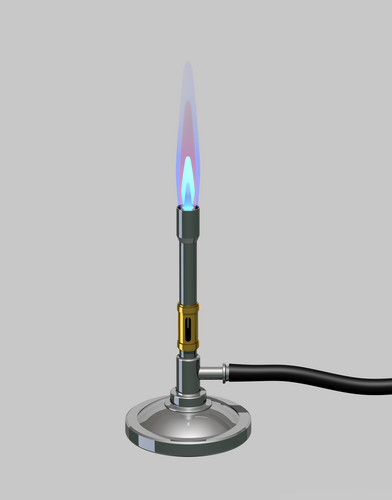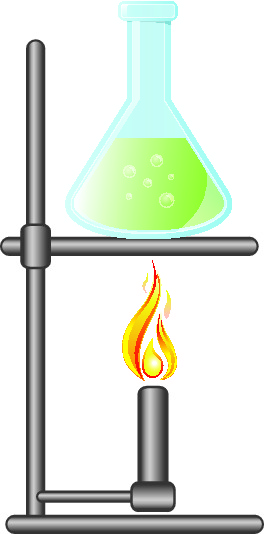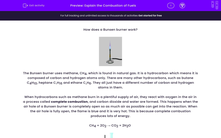How does a Bunsen burner work?

The Bunsen burner uses methane, CH4, which is found in natural gas. It is a hydrocarbon which means it is composed of carbon and hydrogen atoms only. There are many other hydrocarbons, such as butane C4H10, heptane C7H16 and ethane C2H6. They all just have a different number of carbon and hydrogen atoms in them.
When hydrocarbons such as methane burn in a plentiful supply of air, they react with oxygen in the air in a process called complete combustion, and carbon dioxide and water are formed. This happens when the air hole of a Bunsen burner is completely open so as much air as possible can get into the reaction. When the air hole is fully open, the flame is blue and it is very hot. This is because complete combustion produces lots of energy.
CH4 + 2O2 → CO2 + 2H2O

But when the air hole is closed on a Bunsen burner, incomplete combustion occurs. This is because when the air hole is closed, there is now a limited supply of oxygen so when methane burns we get a yellow flame and it produces carbon monoxide rather than carbon dioxide, carbon particulates (in the form of soot) and water too. The yellow flame is not as hot, as incomplete combustion releases less energy than complete combustion.
So you can now explain how a Bunsen burner works, hopefully!
Let's try some questions.







